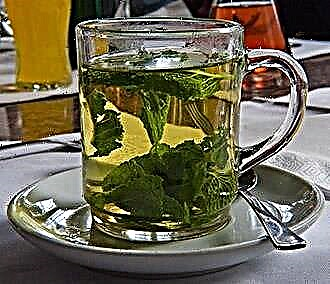Most of the women who were about 45 years old came to see me with a diagnosis of variant angina pectoris. But, of course, the pathology is found in men as well. The main complaints of patients were chest pains in the early morning hours, accompanied by a feeling of fear. A rather typical clinical picture immediately prompted me to think about the presented pathology. But what is it?
Description
Prinzmetal's angina is a disease characterized by cyclical attacks of chest pain arising from spasm of the arteries that supply the heart muscle. In medical practice, you can find other names, such as variant, spontaneous, vasospastic angina. It was first described by the American cardiologist M. Prinzmetal in 1959. In total, about 3% of patients with coronary heart disease suffer from pathology.
According to my personal observations, the disease is more often found in hard-core smokers with diseases such as:
- arterial hypertension;
- peptic ulcer;
- chronic hepatitis of viral and toxic etiology.
Signs of illness
Prinzmetal's angina has become a separate nosological unit due to the difference in the pathogenesis and clinical course of the disease. The classic "angina pectoris" is based on myocardial hypoxia, which occurs due to blockage of the heart vessels by atherosclerotic plaques. Variant angina pectoris appears due to a sharp sudden transient spasm of one of the large branches of the coronary artery. As a result, the lumen is critically narrowed, due to which the heart muscle does not receive the necessary oxygen.
The presence of atherosclerotic altered vessels is not a necessary factor, but in such patients, its initial signs can be diagnosed.
Also, the following important reasons affect the development of pathology:
- changes in the rheological properties of blood (fluidity, viscosity);
- abnormal hyperreactivity of the coronary arteries supplying the heart;
- dysfunction of the endothelium, the inner biologically active membrane of blood vessels, as a result of which there is a decrease in the production of nitric oxide, which affects the vascular tone;
- a decrease in the secretion of estrogens (female hormones), which explains the increase in the number of patients in the postmenopausal period.
A significant difference between vasospastic angina, which, in my opinion, should be given special attention, is the defeat of the able-bodied age group from 35 to 50 years. In many cases, its complications become the cause of disability. The prognosis for full recovery is disappointing.
Of the most common complaints presented by patients with Prinzmetal vasospastic angina, I can single out the following:
- pain in the retrosternal region of a paroxysmal nature lasting about 20 minutes or more, capable of giving to the left half of the body. Periods of increase and decrease of sensations are possible, a series of 2 - 4 attacks;
- interruptions in the work of the heart associated with the presence of a violation of the heart rhythm (tachycardia, extrasystole, atrial fibrillation, etc.);
- nonspecific manifestations - dizziness, lightheadedness, excessive sweating, headache, respiratory failure.
I want to draw your attention to the fact that attacks are cyclical and occur more often from 4 to 6 in the morning. At the end of the attack, all symptoms are leveled, and the patients feel absolutely healthy.
I noted that in most cases there are no provoking factors, but they can be:
- emotional shock;
- hypothermia;
- smoking;
- taking stimulants such as Ephedrine, Amphetamine.
Prinzmetal's angina pectoris has quite specific symptoms and the correct diagnosis for a competent specialist is not difficult. But it is worth remembering that several pathologies can coexist. How to understand the cause of pain? Fixed anatomical stenosis of the coronary vessels, which occurs against the background of atherosclerosis, gives seizures provoked by physical exertion and stress, more often in the daytime. In turn, vasospastic angina pectoris causes coronary spasm, often at night.
Can Prinzmetal's angina be cured?
Here, patients traditionally expect good and bad news. The first is that it is impossible to completely get rid of this disease. Good - Seizure control can be successfully achieved. For this purpose, the following drug therapy is used:
- antiplatelet agents ("Clopidogrel", "Aspirin") are necessary to improve blood rheology;
- nitrates and sydnonimines ("Molsidomin", "Nitroglycerin") are applicable during the onset.
- calcium blockers ("Amlodipine") to reduce vasospasm.
Competent treatment of vasospastic angina pectoris can alleviate the general condition, improve the quality of life and prognosis for almost all patients.
Remember that abrupt cessation of drug treatment can cause an increase in the number of anginal attacks and provoke the development of acute myocardial infarction.
Forecast
Currently, this disease is considered by the cardiological communities as a form of progressive coronary insufficiency of the type of unstable angina pectoris. Consequently, the long-term prognosis of pathology will be, to put it mildly, not the most optimistic. In 20% of cases in the first six months, acute myocardial infarction ("heart attack") develops, 10% of patients are expected to die. Long-term remission with recurrence of symptoms after years is possible. Sudden coronary death occurs in 0.5% of cases. The risk of complications depends on the following factors:
- frequency and severity of anginal attacks;
- the current state of the coronary vessels;
- the adequacy of drug therapy;
- patient compliance, especially with regard to lifestyle adjustments.
Prinzmetal's angina pectoris (variant, vasospastic) today is a reason for scientific discussions, because the question of the clarity of the pathogenesis of the disease remains not fully understood.
Specialist advice for a patient with variant angina
- Give up addictions - smoking and alcohol abuse. In addition, one of the latest studies also noted the negative impact on the vascular endothelium of the use of electronic cigarettes and vapes.
- Normalize your work and rest routine. The optimal time for a night's sleep is considered to be from 22:00 to 6:00.
- Lead an active lifestyle. Physical activity should be at least 30-60 minutes per day. Also, the vessels are favorably influenced by hardening procedures.
- Remember that the prescribed drugs should be taken on time. The drug of choice for Prinzmetal's angina pectoris is calcium channel blockers.
Clinical case
In 2017, a 42-year-old man came to me with complaints of recurrent attacks of anginal pain, mainly at 4:00 - 5:00 in the morning and much less often in the daytime. Associates their appearance with stressful situations that arise at work and at home. Of the bad habits, she notes smoking for the last 30 years. History of peptic ulcer of the antrum of the stomach and duodenal bulb.
General examination and auscultatory picture were normal. There was a slight increase in blood pressure up to 135/85 mm Hg. In the analysis of blood Hb 169 g / l, erythrocytes 5.7 cells / l.Clinical examination of urine without changes. During 3-day Holter monitoring of the electrocardiogram during the next nocturnal attack, ST segment elevation of up to 6 mm in the chest leads was noted, followed by recovery to the isoline at its end. The diagnosis was made: Ischemic heart disease. Angina pectoris Prinzmetal NKo SNo (NYHA)... Prescribed treatment with a calcium channel antagonist - "Verapamil", during the attack allowed the use of nitrates in the form of a spray ("Nitromint"). Complete smoking cessation was also recommended.
The patient reappeared after 2 months and noted a noticeable improvement in the general condition and the complete disappearance of nocturnal and daytime seizures.
Do you have any acquaintances or relatives who are worried about nocturnal attacks of chest pain? Share your experience in the comments, and our expert will express his opinion.



